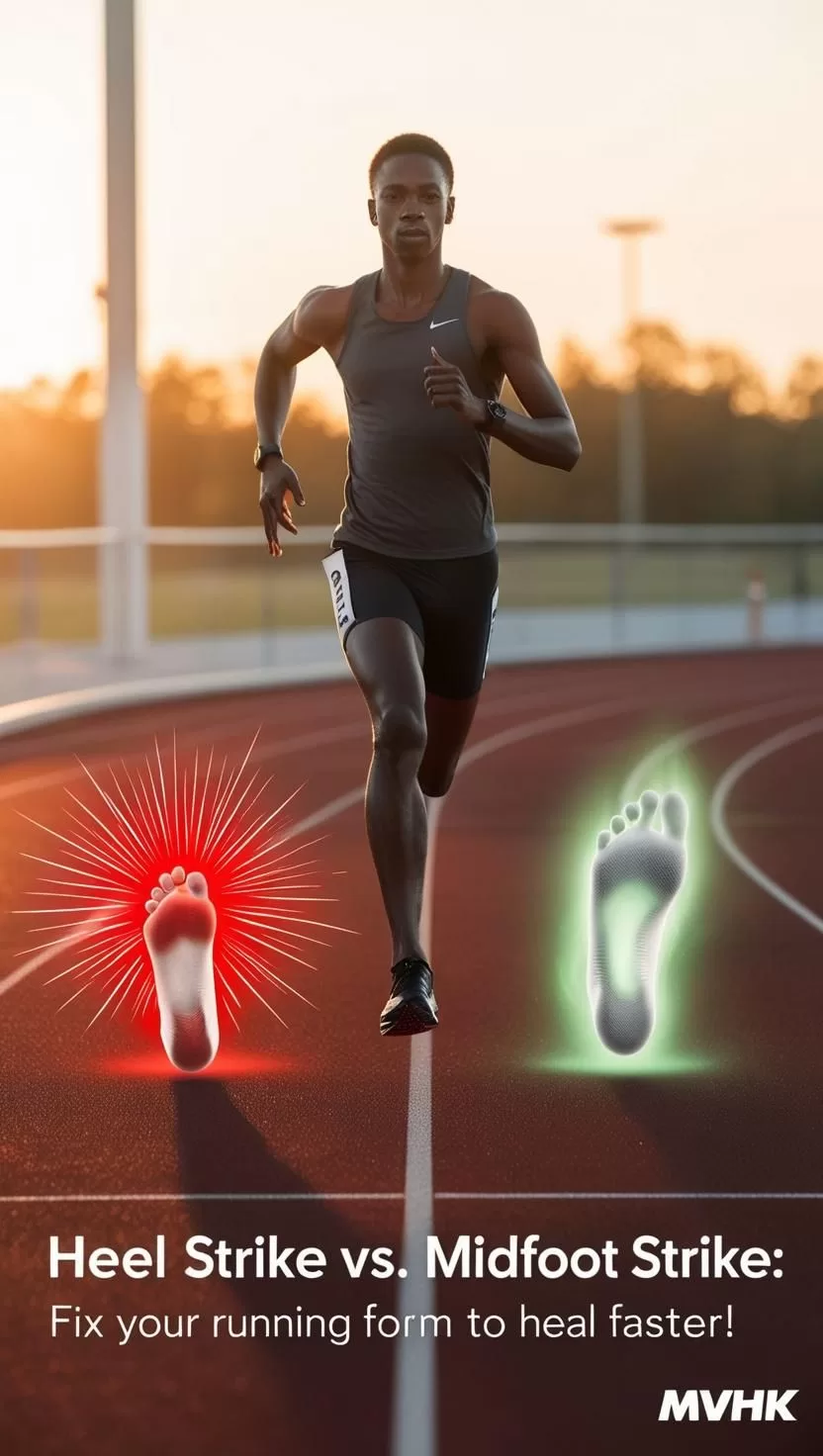Heel Strike vs. Midfoot Strike: Fix Your Running Form to Heal Faster!
Running form is more important than most people realize — especially after an injury. If you’re sticking with heel striking, you might be putting extra stress on your joints and slowing your recovery. Learning to shift toward a midfoot landing could be the fastest, most natural way to reclaim strength and mobility.
Let’s break it down scientifically and practically.
1️⃣ Understanding Heel Striking vs. Midfoot Landing
What Happens When You Heel Strike?
Heel striking is when your heel is the first part of your foot to contact the ground during a stride. It creates a jarring impact that travels up the kinetic chain — feet, knees, hips, and even the lower back. Especially for injured runners, this added shock can:
- Weaken arch muscles
- Reduce toe spread and grip strength
- Disrupt your natural shock absorption
- Alter ankle mobility
A study published in Sports Health shows that heel striking increases the ground reaction forces acting on the body by up to three times compared to midfoot striking. (source)
Benefits of Midfoot Striking
Midfoot landing distributes forces more evenly across the foot and lower body. Key benefits include:
- Strengthening the foot’s natural arch
- Enhancing toe splay and balance
- Improving ankle range of motion
- Minimizing joint stress
MRI studies have shown reduced inflammation in midfoot strikers versus heel strikers. (source)
2️⃣ Why Midfoot Striking Accelerates Injury Recovery
Reduced Shock and Strain
After injuries like plantar fasciitis, shin splints, or Achilles tendinitis, limiting repetitive stress is crucial. A midfoot strike acts as a natural shock absorber, preventing harmful vibrations from reaching sensitive healing tissues.
Improved Muscle Activation
When you land midfoot, you activate your calf muscles, intrinsic foot muscles, and even your core more effectively — key players in regaining stability and reducing compensation patterns that can cause re-injury.
3️⃣ How to Transition from Heel Strike to Midfoot Strike
1. Drills to Retrain Your Stride
- Marching Drills: Focus on lifting knees and landing softly on the midfoot.
- High Knees: Encourage rapid turnover and midfoot landing.
- Jump Rope: Short, quick landings help reinforce the correct pattern.
2. Focus on Form
- Shorten your stride
- Keep your hips stacked over your feet
- Maintain a slight forward lean from the ankles (not the waist)
3. Gradual Mileage Increase
Avoid jumping too quickly into long distances. Transitioning to midfoot striking involves retraining muscles and tendons. Increase weekly mileage by no more than 10%.
🏁 Conclusion: How to Get Started Today
Switching from heel striking to midfoot landing isn’t just about performance — it’s about healing smarter. Start with posture drills, consciously shorten your stride, and stay patient. Your joints, muscles, and future self will thank you.
- PubMed – Impact of foot strike patterns on injury (opens in new tab)
FAQ Section:
FAQ
1. Why is heel striking considered bad for recovery?
Heel striking increases shock through joints, delays healing, and weakens natural foot function.
2. How long does it take to adapt to midfoot striking?
On average, it can take 4–8 weeks of consistent practice and gradual mileage increases.
3. What shoes support midfoot striking?
Lightweight shoes with low heel-to-toe drop encourage midfoot landings without excessive cushioning.






